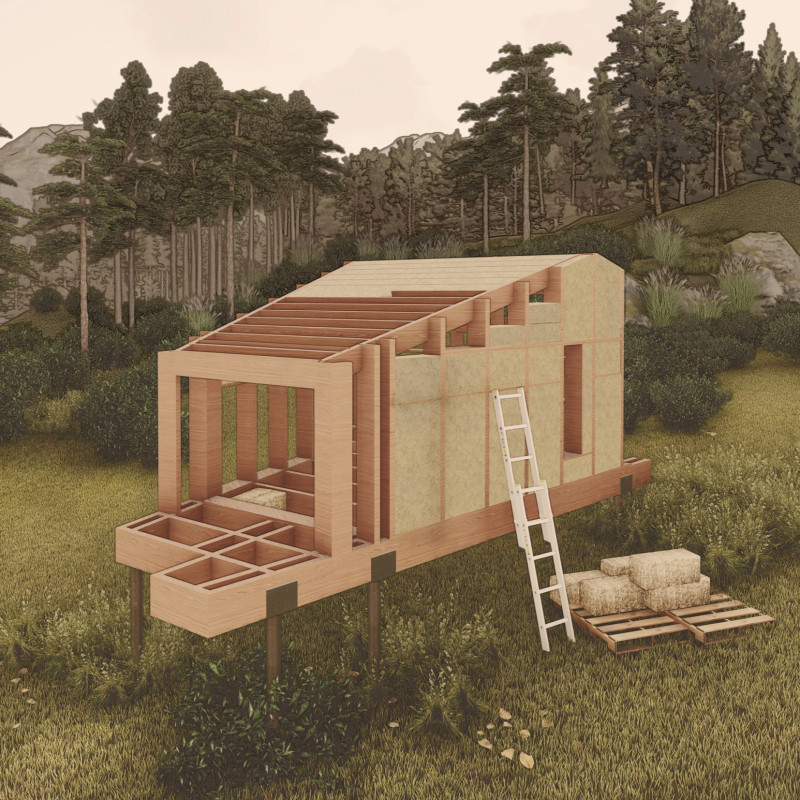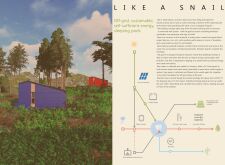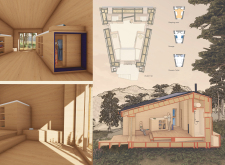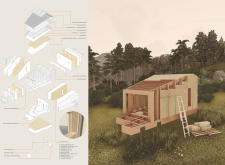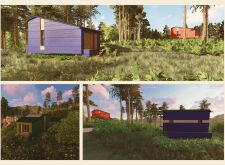5 key facts about this project
Sustainable Materials and Construction Techniques
Central to the project’s vision is the use of sustainable materials. Straw bales serve as the primary insulation material, providing thermal efficiency while being a renewable resource. Incorporating wooden boards for structural elements enables a balance between durability and aesthetic appeal, while laminated timber panels contribute strength to the overall framework. Photovoltaic solar panels installed on the roofs underscore the project’s commitment to renewable energy, allowing the pods to function independently from the grid. This combination of materials results in energy-efficient structures that minimize their ecological footprint.
The architectural approach integrates rainwater harvesting and gray water recycling systems, showcasing a focus on environmental conservation. The design seeks to optimize water management and resource use, establishing a practical model for off-grid living. Each structure is positioned to enhance its relationship with the landscape, maximizing natural light and views while maintaining minimal disturbance to the surrounding ecology.
Functional Design Layouts
The interior layout of each pod is compact and efficient, prioritizing functionality without sacrificing comfort. The incorporation of large windows facilitates natural lighting, creating an inviting interior atmosphere. Multi-functional furniture elements optimize the space, allowing users to maximize utility in a small footprint. The strategic distribution of spaces promotes a sense of openness, fostering an environment that supports both relaxation and productivity.
This project diverges from conventional architectural designs through its pronounced focus on sustainability and minimalist living. By utilizing locally sourced materials and implementing eco-conscious technologies, it creates a model that simplifies living while respecting the natural environment.
For deeper insights into the project, including architectural plans, architectural sections, and further architectural designs, readers are encouraged to explore the full presentation of the "Like a Snail" project. Its commitment to innovative architectural ideas and sustainable practices serves as an important reference for contemporary housing solutions.


